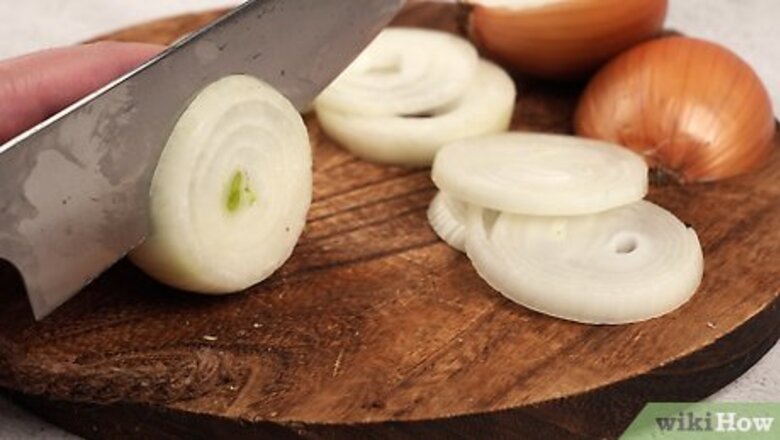
views
Prep time (All-Purpose): 15 minutes
All-Purpose Batter
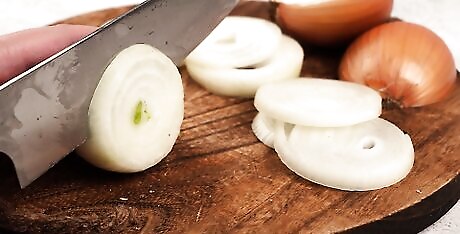
Prepare the food you want to fry. All-purpose batter tastes great with pretty much any meat or vegetable you'd want to fry. No matter what you're frying, cut the food into similar-sized pieces so each piece will fry evenly. Try any of the following foods: Sliced onions, jalapeños or other vegetables. Boneless chicken breasts (cut into strips or nuggets) or bone-in chicken pieces Fish such as cod, tilapia or haddock
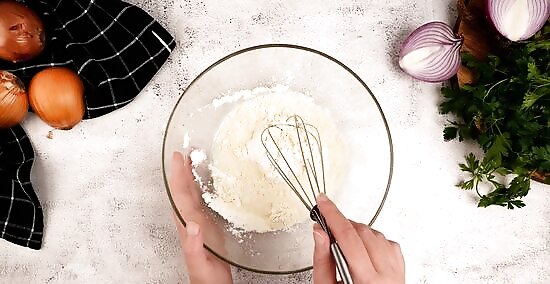
Mix the batter ingredients in a bowl. Add all the ingredients to a bowl and use a whisk to mix them until smooth. This basic batter mix is delicious on its own. If you'd like, customize it by adding a pinch or two of any of the following spices: Old Bay seasoning Cayenne pepper Garlic powder Italian seasoning
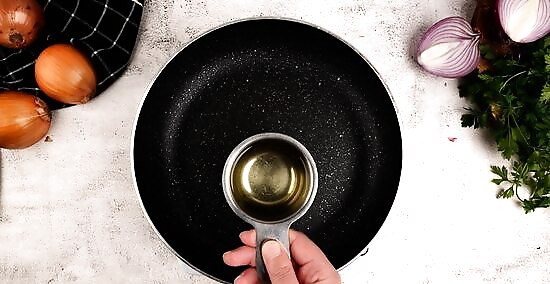
Heat enough oil to submerge the food. Use a deep, heavy-bottomed pot that will heat the oil evenly. In most cases you'll need an inch or two of oil to submerge the food you're frying. Place it over medium-high heat and allow it to heat for several minutes. To test whether it's ready, use a fry thermometer to take the temperature of the oil. Once it reaches 350°F (176°C), it's ready to fry. Choose a high smoke-point oil. Peanut, canola, vegetable and grapeseed oils are all suitable for frying. You want to use an oil that can be heated to a high temperature without smoking. If you don't have a fry thermometer, don't use a meat thermometer. Instead, test the oil by placing a small piece of food in the pot. If it immediately starts to sizzle and turn brown, the oil is ready. Cooking food before the oil is ready will result in the batter sliding off. The food will turn out greasy and wet instead of moist on the inside and crispy on the outside.
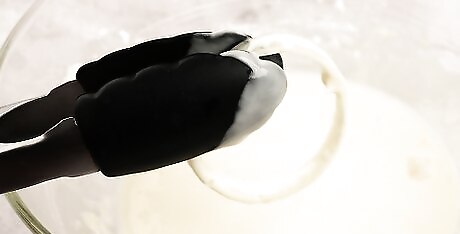
Dip the food pieces into the batter. Use a fork to dip a piece of food into the batter to coat it on all sides. Try to get an even coating of batter. Shake off the excess drips.

Fry until golden brown. Place enough pieces of battered food into the pot to evenly cover the bottom of the pot. Avoid overlapping food, since this will result in uneven cooking. Fry until the food is golden brown on both sides, then place it on a paper towel-lined plate to drain. Cooking times will vary depending on what you're frying. Vegetables typically need no more than three or four minutes in the pot. Smaller pieces will require less time. Raw chicken or fish may require five to fifteen minutes' frying time, depending on how big your pieces are and whether they have bones. The center of the meat should be opaque when it is fully cooked. If the oil seems to be browning and burning the outside of the food before the inside is cooked, turn down the temperature. You want to try to keep it at a steady 350°F (176°C).
Beer Batter
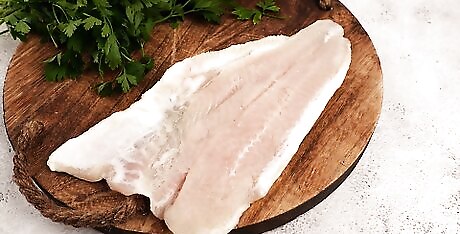
Prepare the food you want to fry. Beer batter comes out crispy and smooth. It's the perfect coating for fish, onion rings and other vegetables. Make sure all food pieces that you want to fry are cut into similar-sized pieces, so they'll fry evenly.
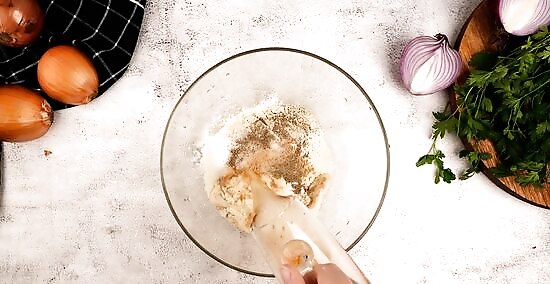
Mix the batter. With so few ingredients, beer batter is easy to make. Just mix the flour, spices, and one 12-ounce beer in a bowl. Use a whisk to mix the ingredients until smooth.
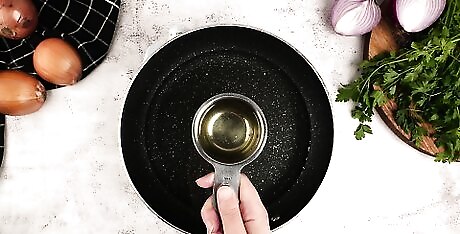
Heat enough oil to submerge the food. Use a deep, heavy-bottomed pot that will heat the oil evenly. Fill the pot with an inch or two of oil to submerge the food you're frying. Place it over medium-high heat and allow it to heat for several minutes. To test whether it's ready, use a fry thermometer to take the temperature of the oil. Once it reaches 350°F (176°C), it's ready to fry. Choose a high smoke-point oil. Peanut oil is traditionally used along with beer batter for a distinctive taste. If you don't have a fry thermometer, test the oil by placing a small piece of battered food in the pot. If it immediately starts to sizzle and turn brown, the oil is ready.
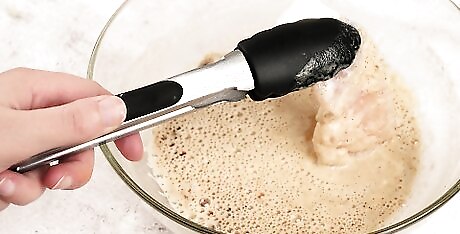
Dip the the food in flour before battering. Dipping the food in flour first will help this rather liquidy batter stick to the food instead of sliding off. Coat the food with flour on all sides. Tap it on the edge of the bowl to remove excess flour. Use a fork to dip the food pieces in batter to coat on all sides. Shake off the excess batter before frying. Having a lot of extra batter in the pan can cause the temperature in the pot to drop, making the food pieces cook unevenly. That's why it's important to shake off excess batter.
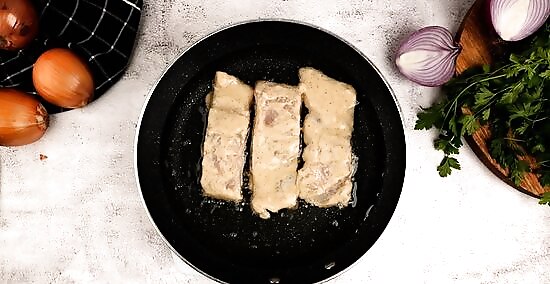
Fry until golden brown. Place the pieces of fish, onion, etc. into the pot. Line the bottom of the pot, and make sure none of the food overlaps. Cook the food until it's golden brown on both sides. Fish pieces generally need about five minutes in the pot. When the fish has turned golden brown, cut into a piece to make sure it's opaque in the middle. If the oil seems to be browning and burning the outside of the food before the inside is cooked, turn down the temperature. You want to try to keep it at a steady 350°F (176°C).
Tempura Batter
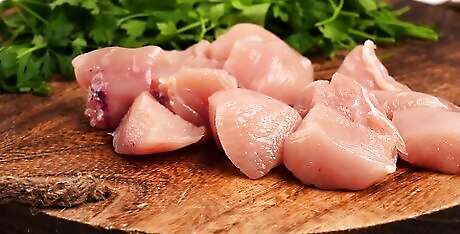
Prepare meat and vegetable pieces. Tempura batter is a thin, crispy Japanese-style batter that is traditionally used with bite-sized pieces of meat, seafood, and vegetables. Cut the food into similar-sized pieces so that it cooks evenly. These foods work well with tempura batter: Shrimp Crab pieces Cubed chicken, pork or steak Broccoli florets Slices of sweet potato
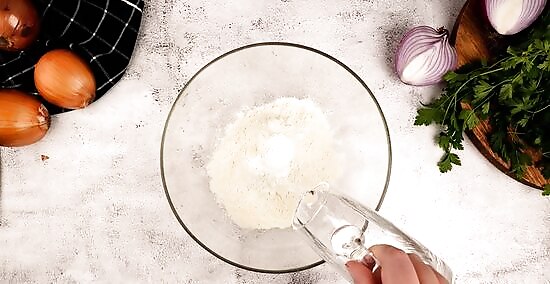
Mix the batter ingredients in a bowl. This batter should come out very thin and runny. Mix the ingredients together and use a whisk to make sure there are no lumps.
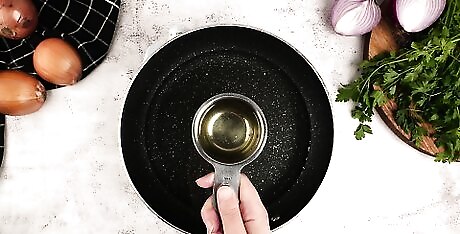
Heat several inches of oil. Pour a few inches of vegetable or peanut oil into a heavy-bottomed pot. Add a few tablespoons of sesame oil for flavor if desired. Heat the oil until it reaches 350°F (176°C). Special tempura fryers are available for keeping the oil at a steady temperature throughout the frying process. If you don't have a fry thermometer, test the oil by dropping a battered piece of food into the pot. If it turns golden brown, the oil is ready to fry.

Dip the meat and vegetable pieces in batter. When cooking tempura, food pieces are normally skewered on wooden or metal skewers. Skewer a piece of food, then dip it into the batter to completely coat it. You may want to skewer more than one piece on the same skewer.
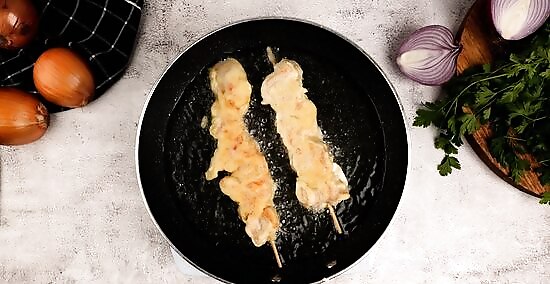
Fry until golden brown. Dip the skewer into the pot so that the food pieces are submerged in oil. Hold them there for several minutes, until they are golden brown on all sides. Since meat will require a longer frying time than vegetables, fry the meat in a separate batch. Small pieces of meat and vegetables should need no more than five minutes' cooking time. Cut into a piece to make sure it is done in the center before eating.



















Comments
0 comment